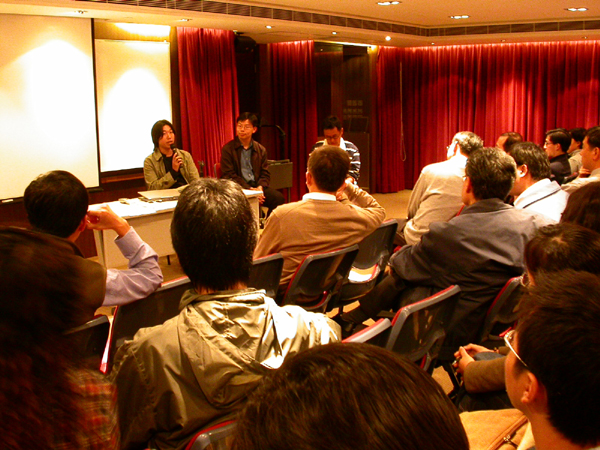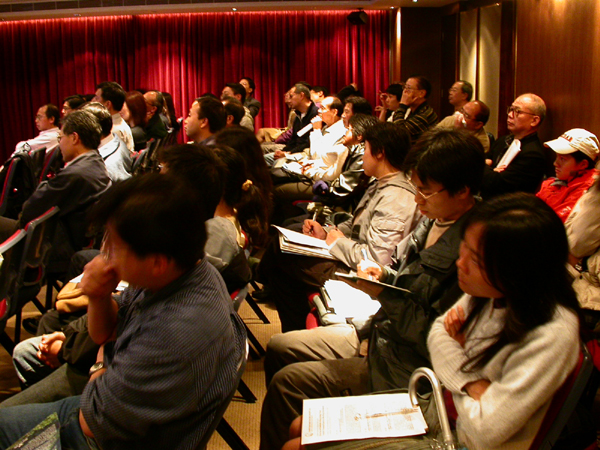 Author
Author |
Topic: Overview of Waterbirds in Hong Kong (30/3) (Read 1714 times) |
|
HKBWS Office
BBS Member
BBS God
    

 
Posts: 1316
|
 |
Overview of Waterbirds in Hong Kong (30/3)
« on: Mar 17th, 2004, 10:23am » |
 Quote Quote  Modify Modify
|
Waterbird Monitoring Programme Public Lecture:
Overview of Waterbirds in Hong Kong: From Globally Threatened Species to Breeding Residents
7:00-8:30pm, Tuesday, 30 March 2004, Room 1114 Hong Kong Scout Center
8 Austin Road, Tsim Sha Tsui, Kowloon, Hong Kong
----------------------
About this Public Lecture
What is the result of long-term monitoring of waterbirds in Hong Kong? What are the long-term trends of globally threatened species including Black-faced Spoonbill? How do monitoring of egrets, herons and other waterbirds carry out? What are the implications of the monitoring programme for local conservation? This public lecture will offer you a unique look at the subject.
Programme highlights include:
- Globally threatened waterbirds in Hong Kong
- Monitoring of nesting colonies of egrets and herons in Hong Kong. Use of key feeding habitats by nesting birds
- Other waterbirds in Hong Kong
Who should attend?
- Wetland enthusiasts / Bird watchers
- Government officers
- Non-government Organizations
- Ecological consultants
- Teachers and students
Speakers include
- Mr. YU Yat Tung - Coordinator, Waterbird Monitoring Programme / Convener of Black-faced Spoonbill Research Group, Hong Kong Bird Watching Society
- Mr. WONG Lun Cheong - Convener of Egret and Heron Research Group, Hong Kong Bird Watching Society
- Mr. Lee Wai Hung / Mr. Eric Liu - Representative from Agriculture, Fisheries and Conservation Department,
Languages
Chinese (with English PowerPoint)
ADMISSION IS FREE. ALL ARE WELCOME
This Public Lecture is supported by:
Agriculture, Fisheries and Conservation Department
|
| « Last Edit: Mar 31st, 2004, 10:41am by HKBWS Office » |
 Logged Logged |
From the HKBWS Office
|
|
|
HKBWS Office
BBS Member
BBS God
    

 
Posts: 1316
|
 |
Re: Overview of Waterbirds in Hong Kong (30/3)
« Reply #1 on: Mar 31st, 2004, 12:09am » |
 Quote Quote  Modify Modify
|
Thank you for your support. About 80 participants joined the public seminar. Here are summaries of the lecture, for members' reference.
(1) Globally Threatened Waterbirds in Hong Kong
by Yu Yat Tung
Coordinator, HKBWS Waterbird Monitoring Programme /
Convenor, HKBWS Black-faced Spoonbill Research Group
Over 110 species with 50,000 individuals of waterbirds utilize Mai Po and Deep Bay area as a wintering site. Some of these are listed as globally threatened, this include the well-known Black-faced Spoonbill. These birds are facing a high risk of extinction from various threats, for example, hunting and habitat destruction. Occurrence patterns of these threatened species and other waterbirds are revealed by the monthly waterbird monitoring programme undertaken by volunteers and researchers of the Hong Kong Bird Watching Society. This programme is a long-term study to provide updated, comparable information, as well as trends of the waterbirds. The information has proven the Mai Po and Deep Bay area as one of the international important wetland to waterbirds.
(2) Monitoring of Nesting Colonies of egrets and Herons in Hong Kong
by Captain L. C. Wong
Convenor, HKBWS Egret Research Group
Mr Wong has studied of egrets and herons since 1996. In this public lecture, he will introduce nesting trend of egrets and herons between 1989 and 2002. Discussion will also be made on existing protection system to their feeding habitats in Deep Bay. Mr Wong will also share with you about conservation of egrets and herons in Hong Kong and South China, in relation to the way forward of the Egret Research Group.
(3) Measure undertaken by AFCD for Waterbirds Conservation in Hong Kong – Conservation of Terns as an Example
by Eric Liu
Agriculture, Fisheries and Conservation Department
The Agriculture, Fisheries and Conservation Department (AFCD) has undertaken various measure to conserve birds in Hong Kong. Using the conservation of terns as an example, AFCD enforces the Wild Animals Protection Ordinance (Cap. 170) to protect the birds, eggs and nests of the breeding terns at the main breeding site. Population survey has been carried out during the breeding season since 2001 to monitor the population of terns in the territory. In 2003, artificial nests were deployed at the main breeding site to enhance the breeding success rate. The artificial nests and decoys of terns on Port Island also attracted four pairs of terns to breed there. Lastly, the disturbance to the breeding terns was minimized through the close liaison between AFCD and different interest groups. This clearly demonstrates the potential of more concerted efforts by the Government and the non-government organizations in nature conservation.


|
| « Last Edit: Mar 31st, 2004, 10:25am by HKBWS Office » |
 Logged Logged |
From the HKBWS Office
|
|
|
|
